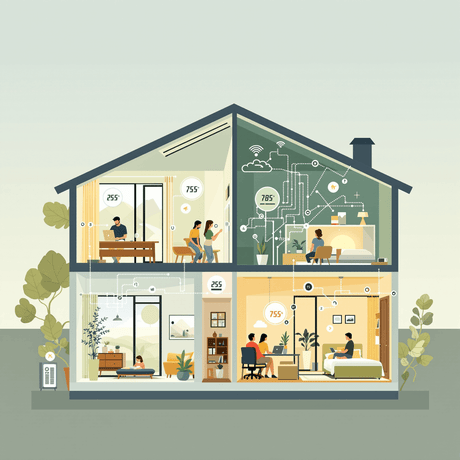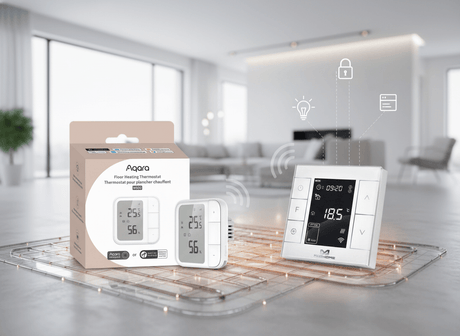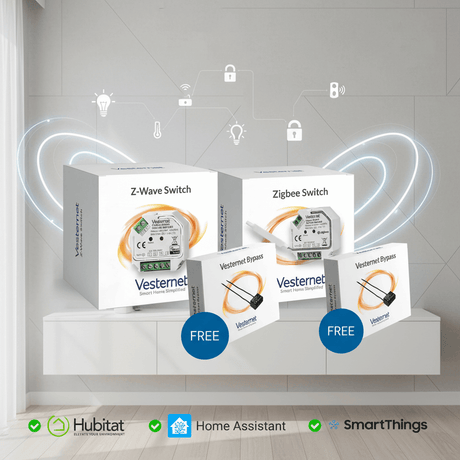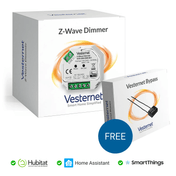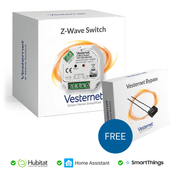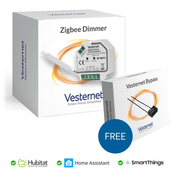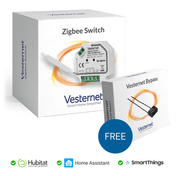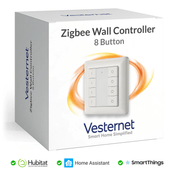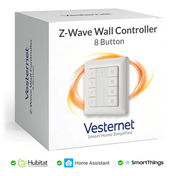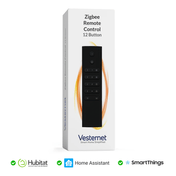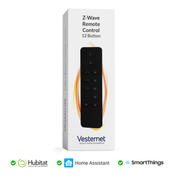Modern homeowners face mounting challenges with inefficient climate control systems that struggle to maintain consistent temperatures whilst energy costs continue to rise. Traditional heating and cooling methods often create uncomfortable hot and cold spots throughout the home, leading to frustrated residents who find themselves constantly adjusting thermostats without achieving the desired comfort level.
Smart home climate control emerges as the comprehensive solution that addresses these persistent comfort challenges through intelligent integration of temperature sensors, automated thermostats, and sophisticated zone-based control systems. These home comfort solutions deliver personalised environmental control whilst significantly reducing energy consumption, transforming how we experience and manage our living spaces.
This complete guide will take you through every aspect of implementing advanced climate automation, from understanding the fundamental components to deploying multi-zone systems that adapt to your daily routines. You'll discover practical strategies for creating the perfect comfort home environment whilst maximising energy efficiency and long-term cost savings.
Understanding Smart Climate Control Fundamentals
Smart climate control systems represent a fundamental shift from reactive to proactive home comfort heating management, utilising interconnected devices that continuously monitor and adjust environmental conditions. These systems combine multiple sensors, intelligent controllers, and automated actuators to create responsive environments that anticipate and meet your comfort needs.
Core components of intelligent climate systems:
- Temperature sensors that provide real-time data from multiple locations
- Smart thermostats with learning capabilities and remote control functionality
- Zone control devices that manage heating and cooling in specific areas
- Integration protocols that enable seamless communication between components
The integration of these components creates a network effect where each device enhances the performance of the entire system, resulting in more precise temperature automation and improved overall efficiency than traditional single-point control methods.
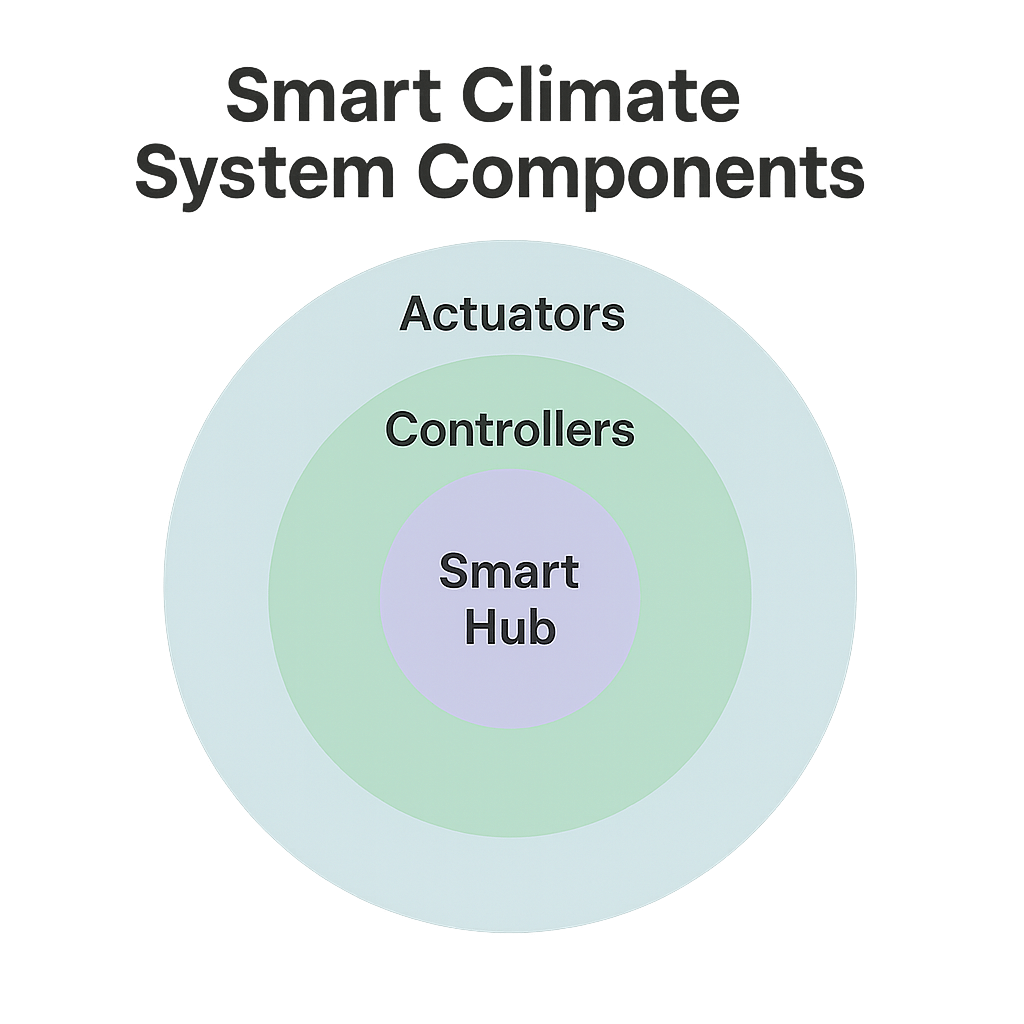
Key Benefits of Automated Home Comfort Solutions
Implementing automated climate control delivers measurable improvements in both comfort and operational efficiency, with studies showing energy savings of up to 23% compared to conventional heating systems. These systems eliminate temperature fluctuations whilst providing unprecedented control over individual room conditions.
The personalisation aspect of modern home comfort solutions allows different family members to enjoy optimal temperatures in their preferred spaces without affecting other areas of the home. This targeted approach reduces energy waste whilst enhancing overall satisfaction with indoor environmental conditions.
Primary advantages of automated climate control:
- Reduced energy consumption through intelligent scheduling and occupancy detection
- Enhanced comfort with consistent temperatures and eliminated cold spots
- Lower utility bills through optimised heating and cooling operations
- Improved air quality management with integrated monitoring systems
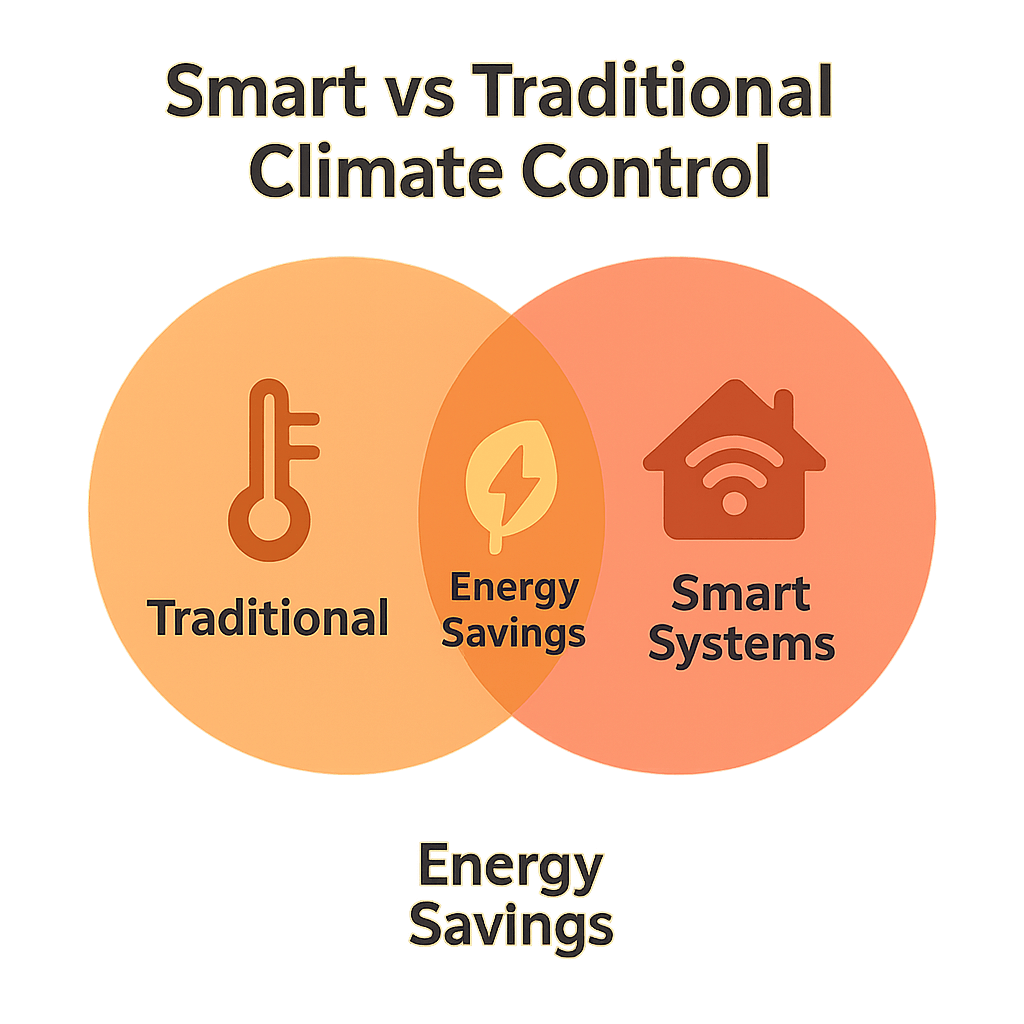
Essential Components for Climate Control Automation
Smart thermostats serve as the central command centre for your home comfort heating system, featuring advanced algorithms that learn your preferences and automatically adjust settings based on occupancy patterns, weather conditions, and energy pricing. These devices replace traditional thermostats with intelligent units capable of remote control and integration with other smart home systems.
Critical automation components:
- Temperature sensors for accurate multi-point monitoring throughout your home
- Thermostatic radiator valves enabling room-by-room heating control
- Air quality monitors tracking humidity, CO2 levels, and particulate matter
- Motor controllers for automated dampers and ventilation systems
Each component contributes specific capabilities that enhance overall system performance, with temperature sensors providing granular data, thermostatic valves enabling precise zone control, and air quality monitors ensuring optimal indoor environmental conditions beyond just temperature management.
Planning Your Multi-Zone Climate Control System
Successful multi-zone climate control implementation begins with comprehensive assessment of your home's layout, identifying natural climate zones based on room usage patterns, sun exposure, and thermal characteristics. This analysis reveals opportunities for targeted temperature automation that maximises comfort whilst minimising energy consumption.
Strategic sensor placement throughout your home ensures accurate monitoring and responsive control, with consideration for factors such as heat sources, air circulation patterns, and occupancy schedules. The planning phase determines long-term system effectiveness and user satisfaction.
Essential planning considerations:
- Room usage analysis to determine heating and cooling priorities
- Thermal zone mapping based on sun exposure and insulation characteristics
- Sensor location strategy for optimal monitoring coverage
- Integration requirements with existing heating and cooling infrastructure
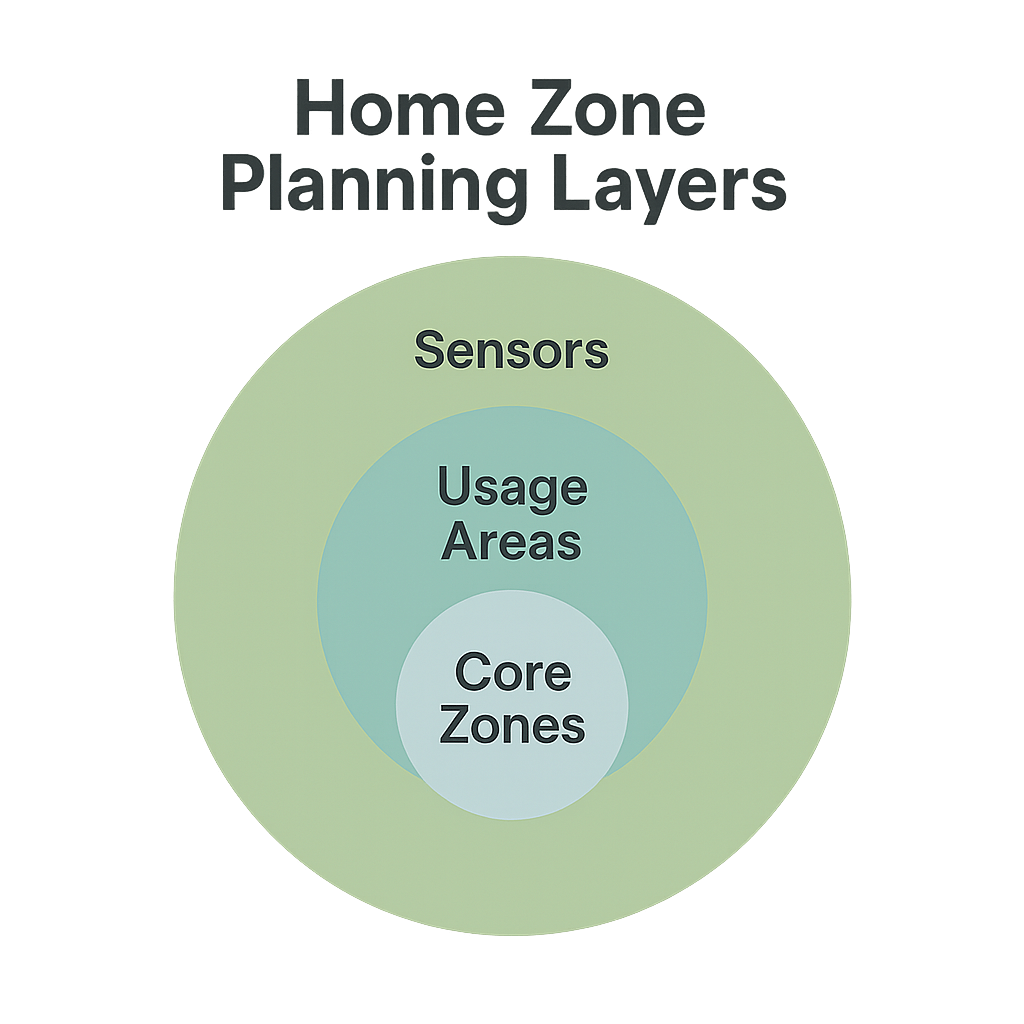
Temperature Automation and Smart Scheduling
Advanced comfort scheduling transforms how your home responds to daily routines, automatically adjusting temperatures based on occupancy patterns, time of day, and seasonal requirements. These systems learn from your behaviour patterns to anticipate heating and cooling needs, ensuring optimal comfort whilst avoiding energy waste during unoccupied periods.
Key scheduling automation features:
- Occupancy-based temperature adjustments that respond to room usage
- Seasonal optimization programmes that adapt to changing weather patterns
- Integration with daily routines for seamless comfort transitions
- Energy-saving modes during extended absence periods
The sophistication of modern temperature automation extends beyond simple time-based schedules to include weather forecasting integration, energy pricing optimization, and predictive heating that warms spaces before occupancy, creating truly intelligent home comfort solutions.
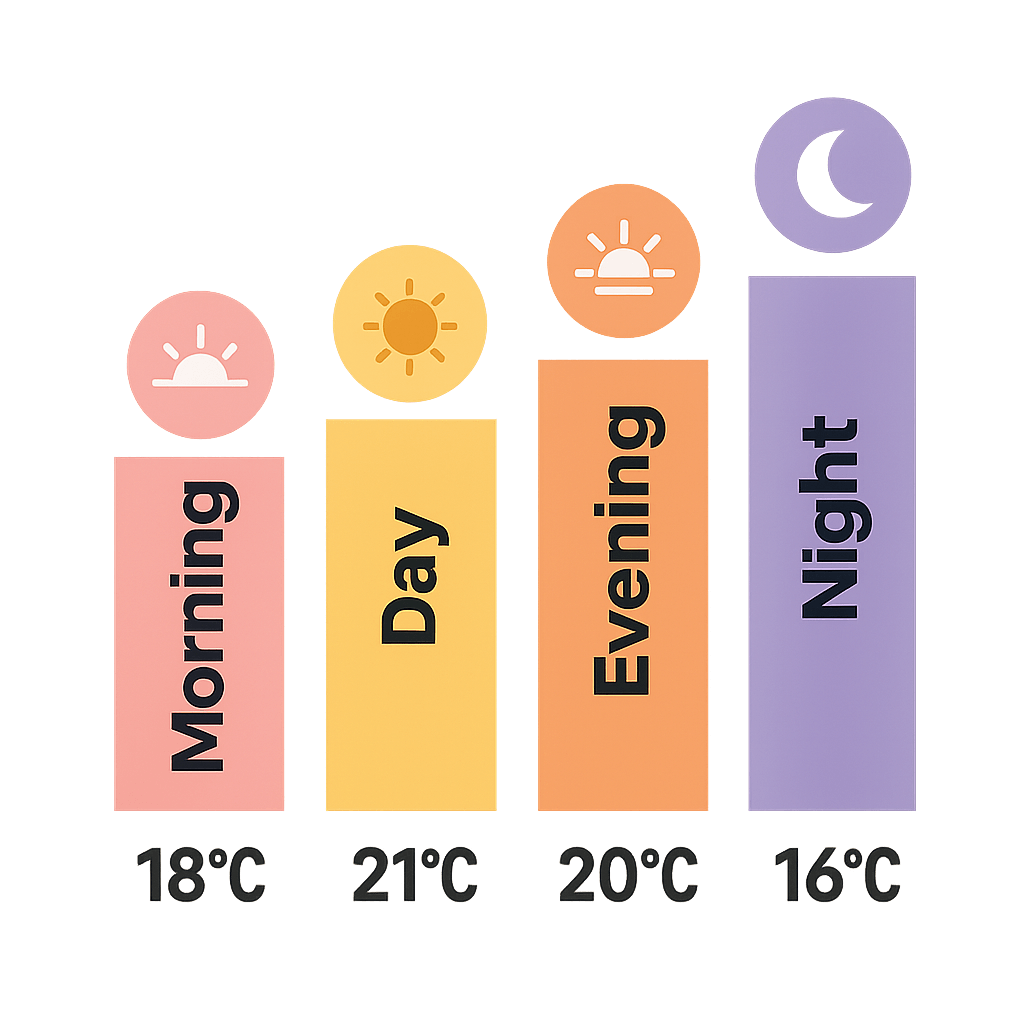
Advanced Multi-Zone Implementation Strategies
Room-by-room climate control represents the pinnacle of home comfort heating sophistication, enabling precise environmental management that adapts to individual preferences and usage patterns. Thermostatic radiator valves play a crucial role in this implementation, providing granular control over heating distribution whilst integrating seamlessly with central automation systems.
The integration of air quality management with temperature control creates comprehensive environmental optimization that addresses humidity, ventilation, and air purity alongside thermal comfort. Motorized window treatments add another layer of climate control through automated light and heat management.
Advanced implementation elements:
- Thermostatic radiator valve integration for individual room heating control
- Automated ventilation systems coordinated with heating and cooling operations
- Smart window treatments for solar heat gain and privacy management
- Whole-house humidity control integrated with temperature automation
Optimizing Air Quality and Comfort Integration
Air quality sensors significantly enhance climate control effectiveness by monitoring factors that impact comfort beyond temperature, including humidity levels, CO2 concentrations, and airborne particulates. This comprehensive monitoring enables automated adjustments to ventilation systems that maintain optimal indoor air quality whilst supporting heating and cooling efficiency.
Air quality integration benefits:
- Automated humidity control that prevents condensation and maintains comfort
- CO2 monitoring with ventilation adjustments for improved air freshness
- Particulate detection triggering air purification systems
- Coordinated operation with HVAC systems for holistic environmental management
The synergy between air quality monitoring and temperature automation creates truly intelligent comfort home environments that adapt to both thermal and atmospheric conditions, ensuring optimal indoor environmental quality throughout all seasons.
Troubleshooting and Maintenance Best Practices
Regular system maintenance ensures long-term reliability and optimal performance of your automated climate control system, with periodic sensor calibration and connectivity verification preventing common issues before they impact comfort or efficiency. Understanding typical troubleshooting procedures empowers homeowners to resolve minor issues quickly whilst identifying situations requiring professional assistance.
Proactive maintenance includes monitoring system performance metrics, updating device firmware, and verifying proper integration between components to maintain seamless operation of your home comfort solutions.
Essential maintenance practices:
- Regular sensor calibration to ensure accurate temperature and air quality readings
- Connectivity testing to verify reliable communication between system components
- Performance monitoring to identify optimization opportunities and potential issues
- Firmware updates to maintain security and access new features
Conclusion
Smart climate control systems transform home comfort through intelligent automation that delivers personalised environmental management whilst achieving significant energy efficiency improvements. The integration of temperature automation, comfort scheduling, and multi-zone control creates responsive living environments that adapt to your lifestyle whilst reducing operational costs and environmental impact.
Implementation success depends on careful planning, appropriate component selection, and gradual system expansion that builds upon foundational automation elements. Start with core temperature control automation, then progressively add air quality monitoring, zone-specific controls, and advanced scheduling features to create your ideal comfort home environment.
Explore Vesternet's comprehensive range of climate control solutions including smart thermostats, precision temperature sensors, thermostatic radiator valves, and advanced air quality monitors to begin transforming your home comfort experience. Our expert team provides personalised guidance to help you design and implement the perfect automated comfort system tailored to your specific needs and preferences.


